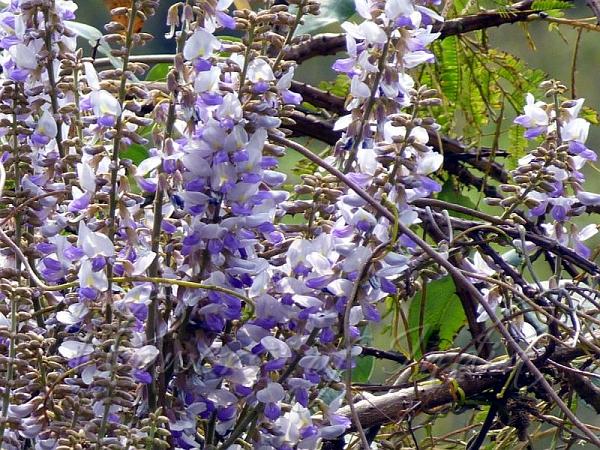|
| Indian Kudzu |
|

|

| File size | 199489 |
| Original date | 4/5/12 2:00 PM |
| Resolution | 800 x 600 |
| Flash | Flash did not fire, auto |
| Focal length | 74.0mm |
| Exposure time | 1/125s |
| Aperture | 4.5 |
| Focus Distance | |
| Metering Mode | Multi-segment |
| Camera make | Panasonic |
| Camera model | DMC-FZ40 |
| Sensor type | OneChipColorArea |
|
|
|
Photo: |
Botanical name: Pueraria tuberosa Family: Fabaceae (Pea family)
Synonyms: Hedysarum tuberosum
Synonyms: Hedysarum tuberosum
Indian kudzu is a large perennial climber with very large tuberous roots,
distributed nearly throughout India, except in very humid or very arid
regions, and ascending up to l,200 m. Woody stems grow up to 12 cm in diameter.
Leaves are divided into 3 leaflets. The leaflets are egg-shaped, with
round base and unequal sides. They are 18 cm long and 16 cm wide and
are hairless above. Flowers blue or purplish blue, in 15-30 cm
long racemes. Pods are flat and 5-7 cm long, densely clothed with long,
silky, bristly brown hairs; seeds 3-6. Indian Kudzu is found in the
Himalayas, from Kashmir to Nepal, at altitudes of 300-1500 m. It is also
found in Western Ghats and some other parts of India. Flowering: March-April.
Medicinal uses: In Ayurveda, this herb is used as a general tonic,
for headaches, and as a aphrodisiac. The roots are said to be used in medicine
as a demulcent and refrigent in fevers, as cataplasm for swelling of joints,
and as lactagogue. It is also emetic, galactogogue and tonic. Now a days it is
used in preparing sexual potency enhancement pills.
In Ayurveda, this herb is used as a general tonic,
for headaches, and as a aphrodisiac. The roots are said to be used in medicine
as a demulcent and refrigent in fevers, as cataplasm for swelling of joints,
and as lactagogue. It is also emetic, galactogogue and tonic. Now a days it is
used in preparing sexual potency enhancement pills.
Medicinal uses:
 In Ayurveda, this herb is used as a general tonic,
for headaches, and as a aphrodisiac. The roots are said to be used in medicine
as a demulcent and refrigent in fevers, as cataplasm for swelling of joints,
and as lactagogue. It is also emetic, galactogogue and tonic. Now a days it is
used in preparing sexual potency enhancement pills.
In Ayurveda, this herb is used as a general tonic,
for headaches, and as a aphrodisiac. The roots are said to be used in medicine
as a demulcent and refrigent in fevers, as cataplasm for swelling of joints,
and as lactagogue. It is also emetic, galactogogue and tonic. Now a days it is
used in preparing sexual potency enhancement pills.| Identification credit: Pravin Kawale | Photographed in Uttarakhand & Maharashtra |
• Is this flower misidentified? If yes,